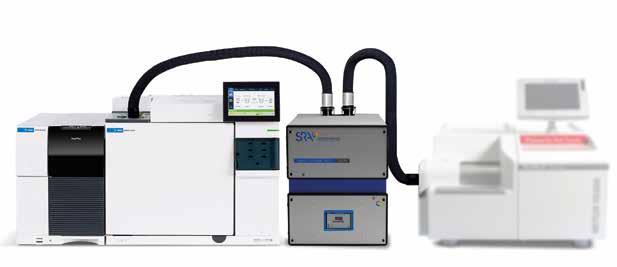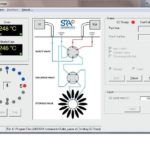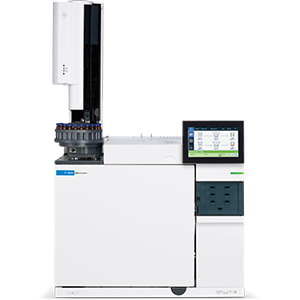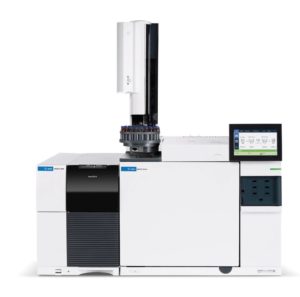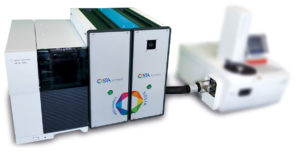Programmable storage interface between TGA and GC/MSD. IST16 allows to sequentially store in 16 loops several fractions of EGA.
Thermogravimetry combined with gas chromatography and mass spectrometry (TGA-GC/MS) can be one choice for the qualitative and quantitative analysis of evolved gases.
During the thermal degradation cycle of the materials, the composition of the evolved gas changes too fast for a GC/MS analysis in its standard configuration.
With IST Interface, the chromatographic separation time is no longer a limitation for the detailed study of complex thermal analysis profiles.
IST16 interface allows to sequentially store in 16 loops several fractions of the gaseous effuent from the TGA and to automatically inject these samples into the GC/MS. The gases, evolved during the cycle of the TGA, are transmitted to the storage interface and then to the GC via heated and temperature controlled micro-volume transfer lines and IST16 is designed to be coupled to any TGA and GC/MS models.
The IST16 is supplied with a dedicated interface.
With IST16 Interface it is possible to work in:
• Charge different loops following a time table filled by operator and then inject in the GC
• Charge one single loop and direct injection in the GC.
Technical specification:
- 16 storage loops;
- Transfer lines temperature: 250 °C;
- Loop volume: 250 µL in standard, customised volumes on request;
- Multisystem compatibility;
- Fully automated;
- Lines and loops treatment: Sulfinert.
The SRA IST software allows to edit the storage sequence, save the methods, view the status of the instrument and automatically manage the start of the GC analyses.
The gases evolve during the cycle of the TGA are transmitted to the storage interface and then to the GC via heated and temperature controlled micro-volume transfer lines.
Documents
Study of a Biomass Sample by TGA-GC/MS and TGA-Micro GC/MS
Evolved compounds of biomass can be easily characterized by TGA coupled to a GC/MS (heavy and medium compounds) and MicroGC/MS (permanent and light compounds).
These techniques can be used to characterize the structure and composition of the various gases evolved from the thermal decomposition of biomass feedstocks, and hence help assess their potential as a source of energy.



